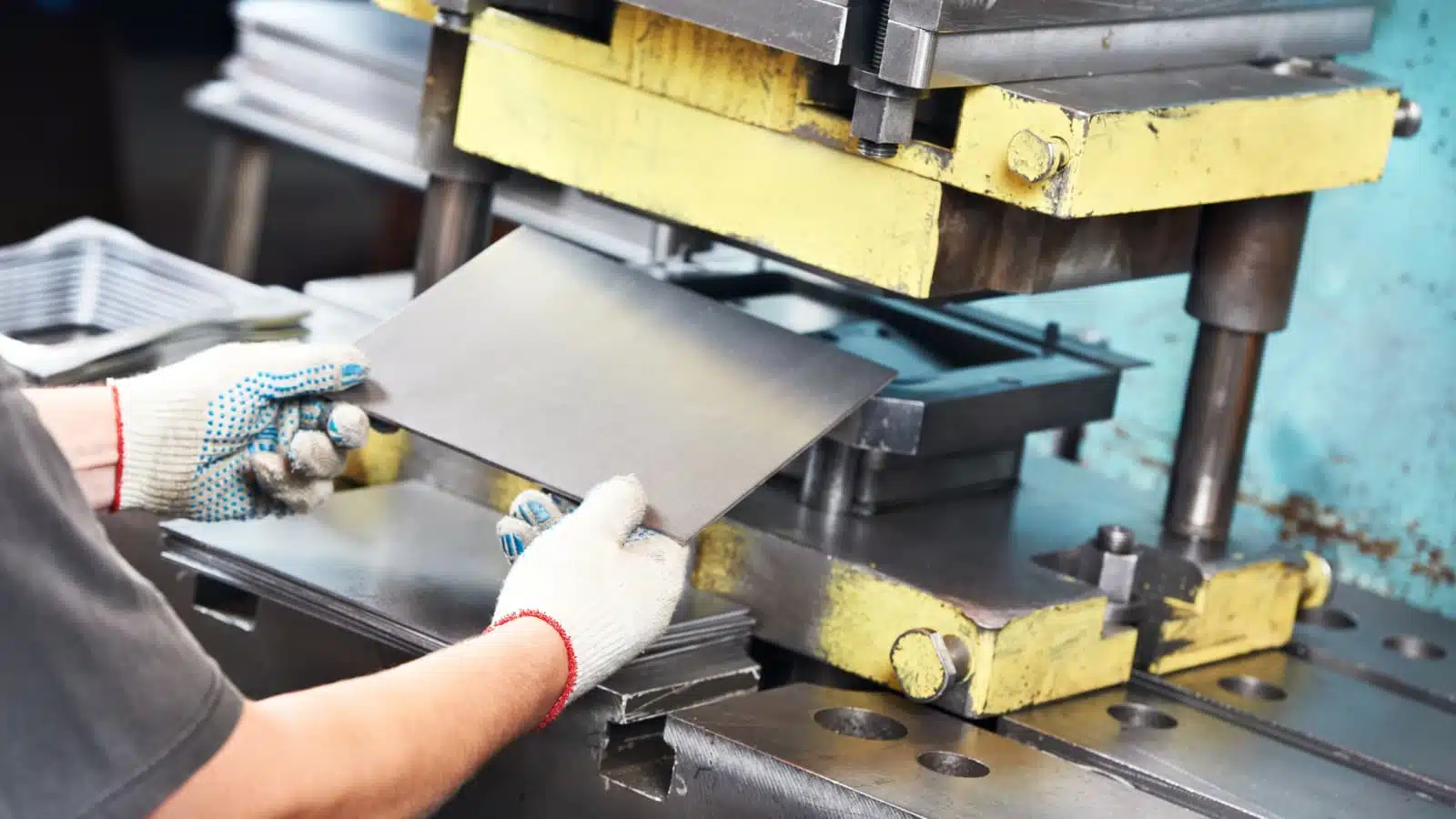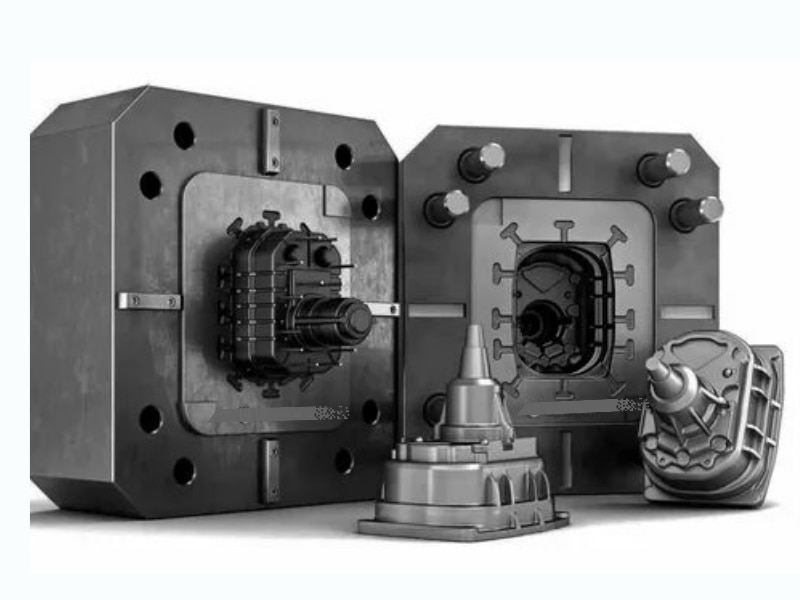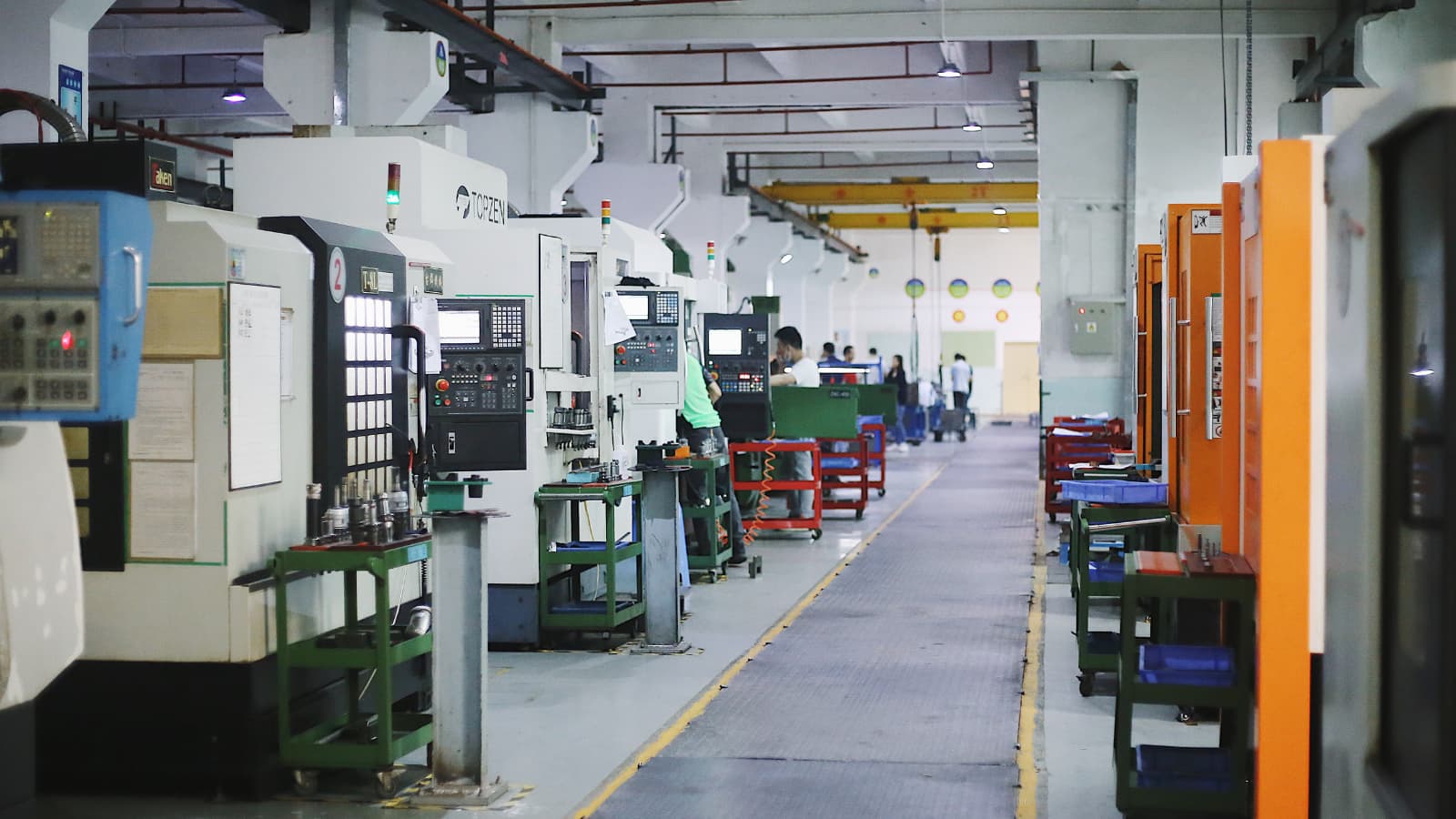Sheet metal fabrication for the automotive industry is a transformative art, turning raw materials into functional marvels. Car part fabrication isn’t just a process—it’s a testament to precision, skill, and innovation.
As vehicles become more advanced, the demand for high-quality automotive parts grows, underscoring the indispensable role of sheet metal fabrication in the automotive industry. Dive in to explore how this technique shapes the vehicles of today and tomorrow.
Brief History of Metal Fabrication and Its Use in Automobiles
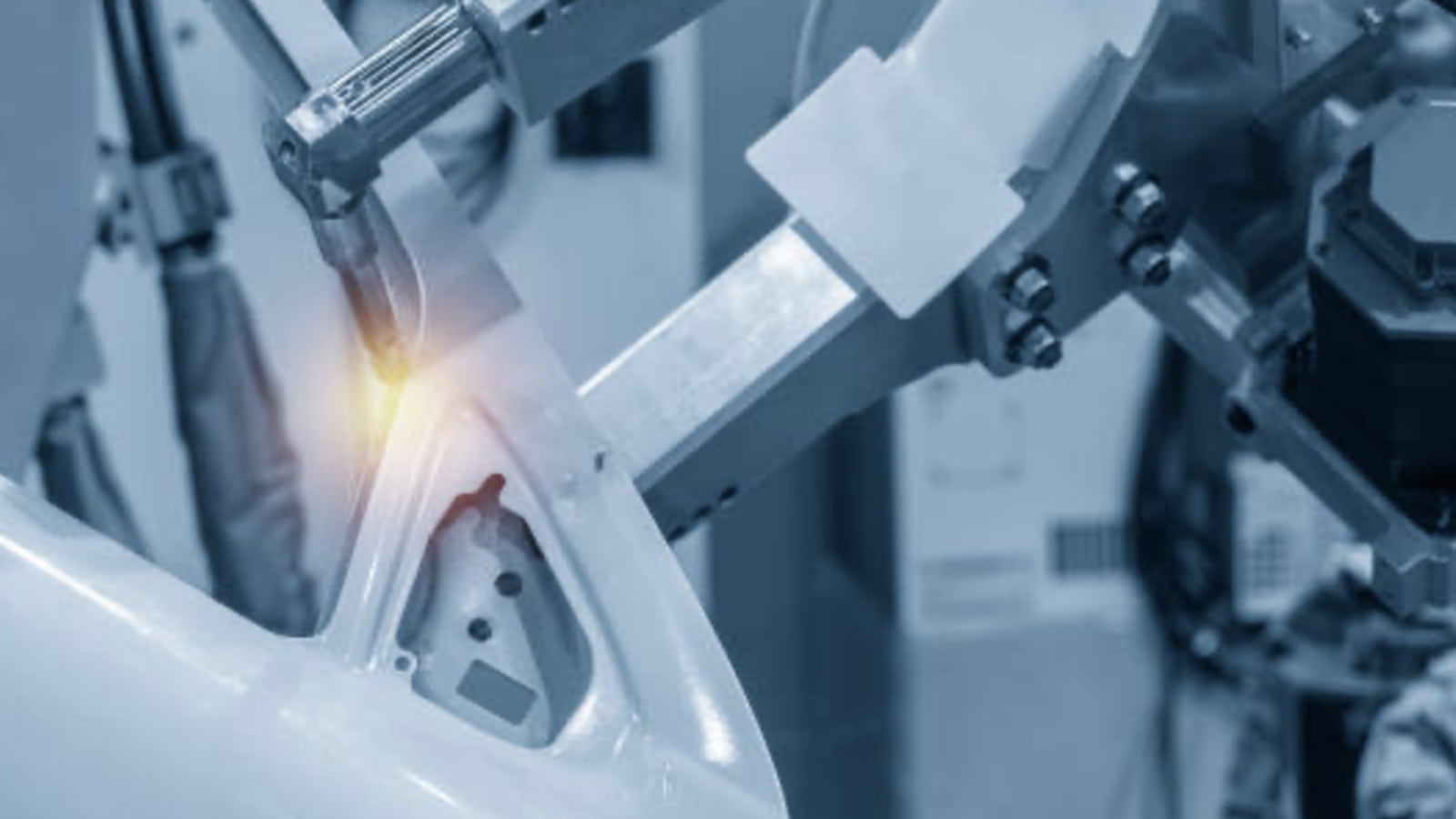
The earliest mode of transportation, i.e., wooden horse-drawn carriages, shares a similar component to the earliest cars: the chassis. The earliest cars, therefore, use wooden chassis, and this wooden makeup means that they cannot bend in certain ways.
A few years later, metal fabrication for cars became popular, with the likes of Ford using steel to make the chassis of their car (Ford’s 1908 Model T car). In the 20th century, automakers started turning metals into sheets, and in 1914, Dodge built an all-steel-bodied car emphasizing how it is more rigid and safer.
Using sheet metal fabrication for the automotive industry changed the world of car building as Dodge’s all-steel-bodied automobile was a huge success. By the late 1970s, there was further experimentation on other metals, such as aluminum, aiming at enjoying their benefits.
The use of aluminum for car part production in the past 40 years increased significantly, with companies such as Ford using it in making hoods, bumpers, suspension arms, trunks, and even aluminum body panels and guaranteeing weight reduction, fuel efficiency, faster speed, crash energy absorption, and recyclability.
The emergence of sheet metal fabrication led to the phasing out of wooden cars. However, technological advancement is ongoing, with carbon fiber known for its strength (five times stronger than steel) and stiffness.
Benefits of Sheet Metal Fabrication for the Automotive Industry
Sheet metal fabrication is pivotal in the automobile industry, offering several advantages for manufacturers and consumers.
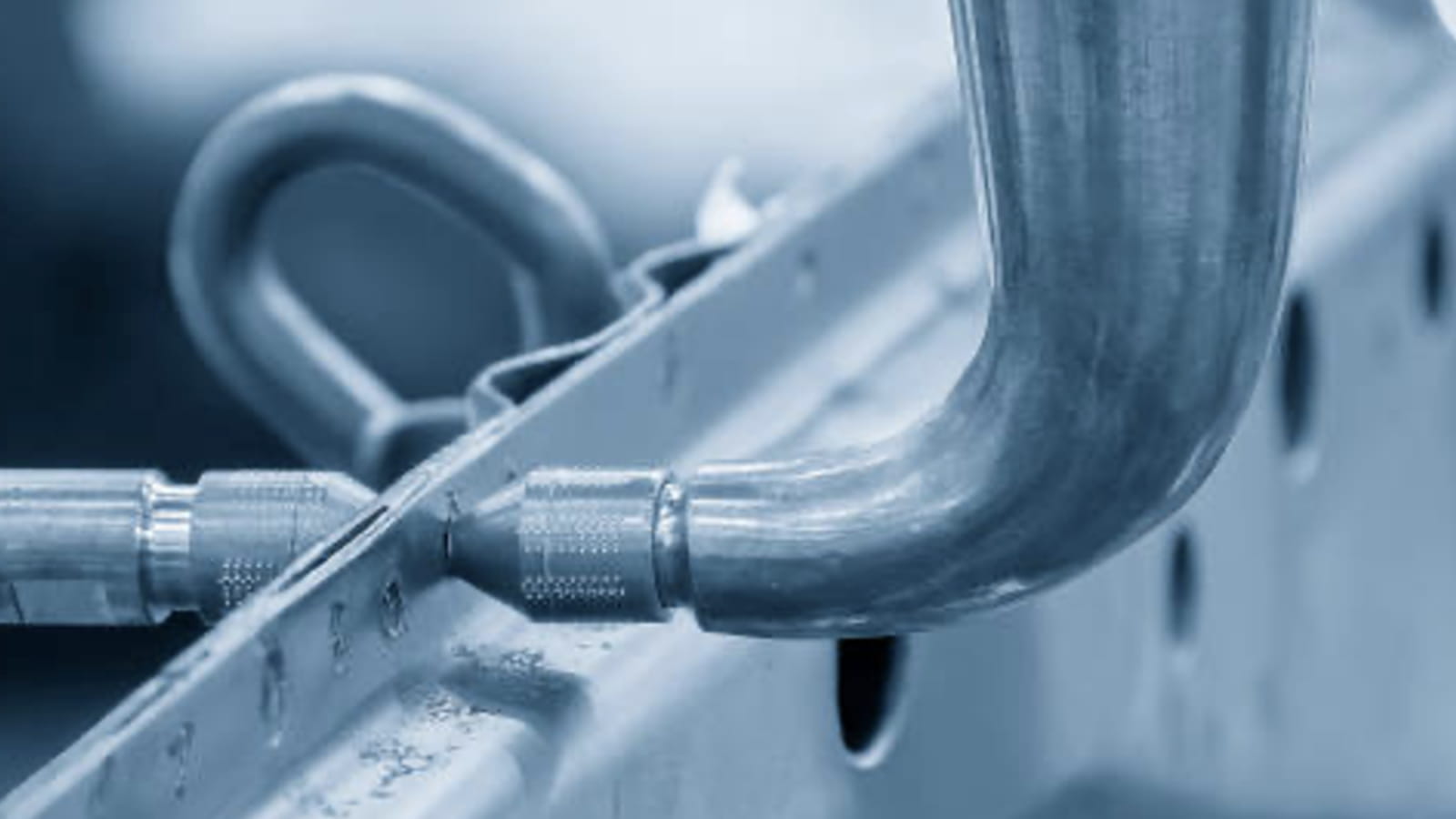
Lightweight Vehicles for Fuel Efficiency
Sheet metal fabrication of metals with lightweight properties gives a foremost advantage required by the automobile industry. Reducing the weight of car parts means less energy is needed to move the car. As a result, this reduces the need for fuel and carbon footprint.
Sheet metals such as aluminum and high-strength steel alloys are lightweight and have an excellent strength-to-weight ratio. Consequently, businesses in metal fabrication for cars can design thinner and lighter components with high structural integrity.
Durability and Longevity of Components
The extensive use of metal fabrication translates to increased durability and longevity. As a result, automobiles can operate better in harsh environments and occasional road debris. Furthermore, it increased car crashworthiness as cars can protect occupants during collisions.
Sheet metals such as steel and aluminum are also robust, wear and tear and corrosion resistant. They can maintain their structural integrity for several years.
Customization and Design Flexibility
Sheet metal fabrication is highly favored due to its flexibility and customizability during car part fabrication. Consequently, automakers can use the process to create complex and intricate shapes for aerodynamics, aesthetics, and functional purposes while meeting specific requirements.
Computer-aided design (CAD) technology has also improved customizability because of increased precision and accuracy. Parts have a better fit and alignment and can adhere well to the required standard.
Cost-Effective Production
Businesses consider sheet metal fabrication for automotive parts because it excels in cost-efficient production. It allows the mass production of high-quality materials at low costs. In addition, incorporation with CAD technology leads to enhanced precision and repeatability, reduces human error, and minimizes waste.
Sheet metals are readily available and are in a cost-competitive market, allowing automakers to reduce production costs and make cars and car parts more affordable. In addition, maintenance cost is lower due to the ease of repair and replacement.
Types of Sheet Metal Used in the Automotive Industry
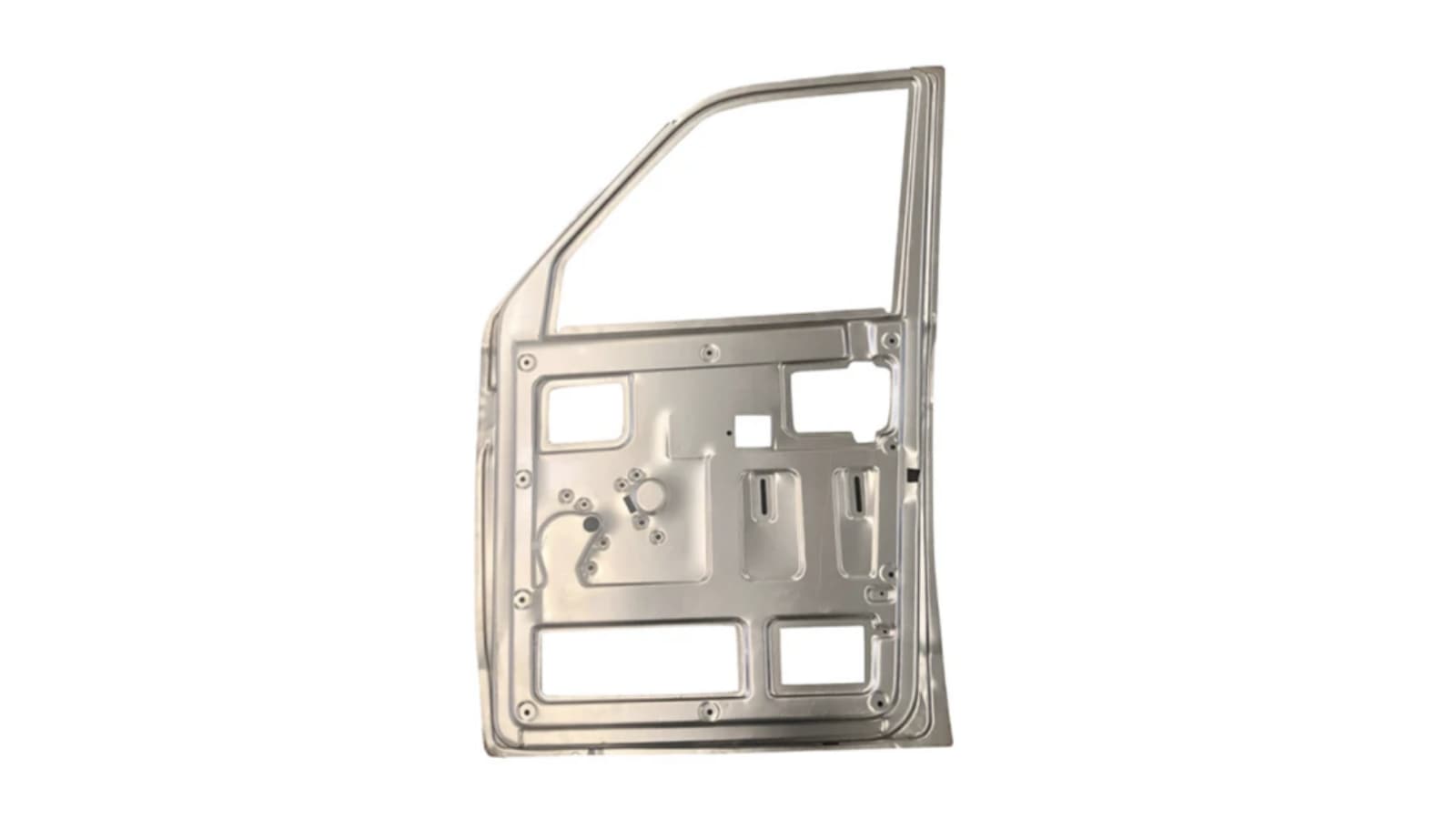
There are various types of sheet metal crucial for advanced vehicle performance, safety, and overall quality.
Aluminum
Aluminum is the most common material used in the automobile industry due to its lightweight, strength, and corrosion resistance. Using it reduces the fuel needed to power the car, hence a reduced carbon footprint. Furthermore, even though lightweight, it has high strength, making it suitable for car parts that require high structural integrity.
Aluminum is applicable in the metal fabrication of parts such as hoods, doors, and fenders. Its high thermal conductivity improves heat dissipation when making engine components, improving vehicle performance.
Steel
Steel is the oldest and most accepted metal material for car part manufacturing, with its immense strength and durability. Currently, it is applicable in fabricating vehicle frames and structural components.
There are different grades of steel, each with different properties, such as the balance between strength and weight, making them suitable for different automotive fabrication. High-strength steel, prized for its superior energy absorption properties, is commonly used in front and rear impact structures. Meanwhile, stainless steel is the go-to material for producing exhaust systems and mufflers.
Magnesium
Magnesium is a lightweight automotive material with an excellent strength-to-weight ratio, which makes it another option to achieve reduced fuel use and excellent thermal conductivity for better heat dissipation.
It is not common, like aluminum and steel, but applies to the automotive fabrication of components like steering wheels, instrument panels, and transmission cases. Its excellent thermal conductivity helps dissipate heat in these applications.
Titanium
Titanium is corrosion resistant, high strength, and exceptional heat resistance. Its strength allows it to withstand heavy loads and impacts, and its corrosion resistance ensures its longevity in harsh environments. Furthermore, its ability to withstand high temperatures makes it applicable to heat-producing car components.
Titanium has limited use in the automobile industry due to its high cost. Nevertheless, it is applicable in making exhaust systems and suspension components.
Copper and Brass
Copper and brass have excellent electrical conductivity, making them suitable for interior automotive components like electrical connectors.
Furthermore, their excellent thermal conductivity makes them the right materials for components that require heat dissipation, such as heat exchangers and radiators.
Alloys
Combining different metals into alloys makes improving the metal’s properties possible. As a result, alloys are suitable for specific automotive fabrication. Examples include high-strength steel and aluminum alloys that balance ductility, strength, and corrosion resistance. Such alloys are applicable in making components such as door beams to improve car crashworthiness.
Zinc
Zinc is applicable in galvanizing other sheet metals to improve their corrosion resistance. It is applicable in making automotive parts like chassis components and body panels where there is a need for corrosion resistance.
A successful automotive fabrication process depends heavily on the knowledge of each material available in the market. So, you need to trust sheet metal fabrication services with extensive material knowledge. At RapidDirect, we offer the best at a competitive price.
Sheet Metal Fabrication Techniques for Auto Parts
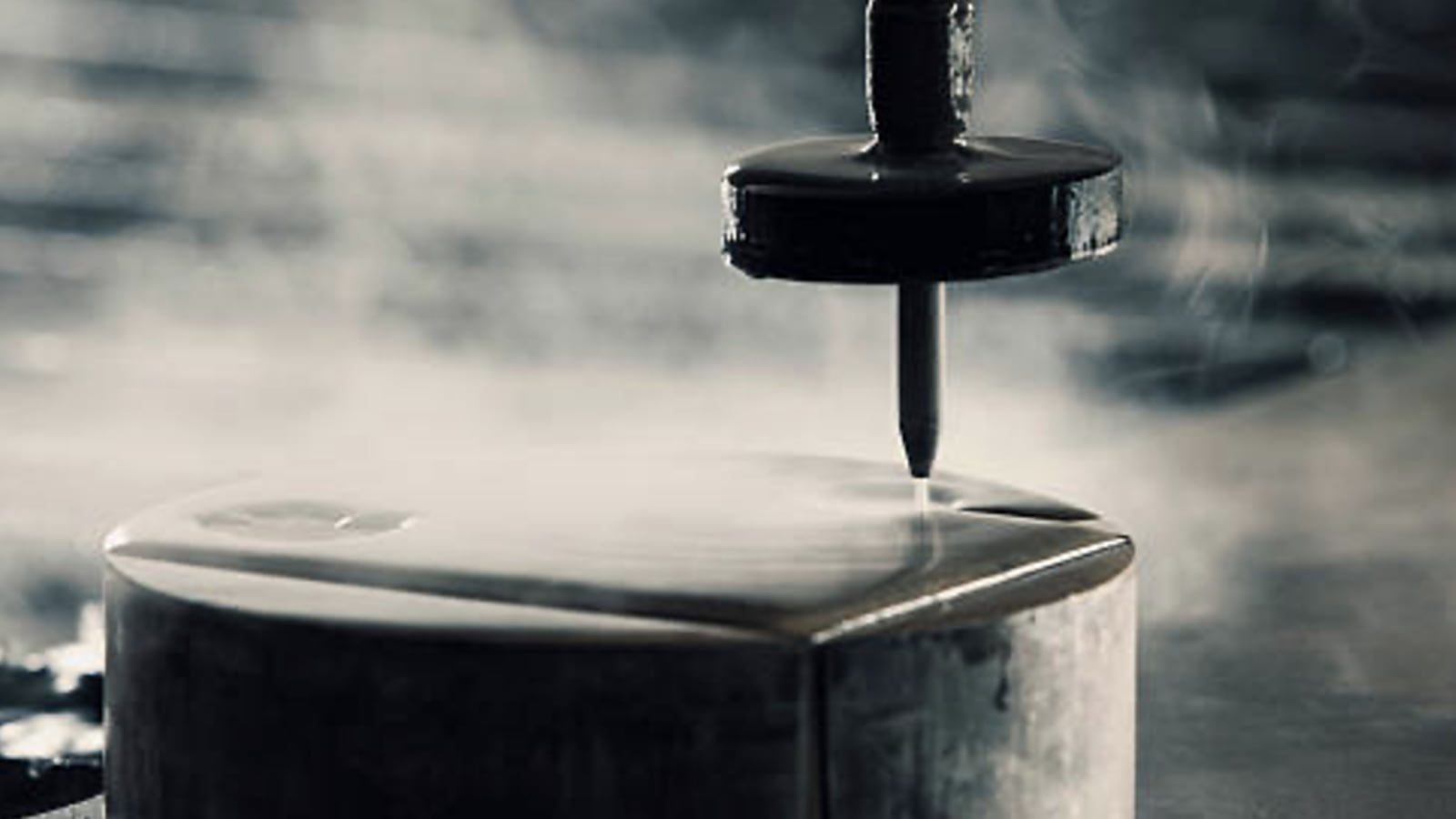
There is a set of techniques to shape sheet metal to form a product. Of these techniques, there are some integral in the automobile industry. As this section discussed, choosing sheet metal fabrication for automotive parts depends on understanding each technique.
Sheet Metal Cutting Techniques
Laser, plasma, and shearing are the three common sheet metal cutting techniques in automotive part manufacturing.
1. Laser Cutting
Laser cutting is the most common automotive fabrication technique when there is a need for high-precision cutting. The process involves using a focused laser beam to melt and vaporize the sheet metal, leaving a precise and clean cut.
There are also CNC laser cutting machines with better precision and accuracy ability to create complex shapes and achieve tight tolerances. They have wide material compatibility and are applicable in fabricating automotive body panels, engine components, and interior parts.
Advantages
Consider laser cutting for the following reasons:
- Laser cutting has high precision and accuracy, making it suitable for designs with tight tolerance and shapes.
- The cutting process leaves a smooth and clean edge and does not need secondary finishing.
- It is an efficient process, making it suitable for high-volume production.
- The increased precision and accuracy reduce waste.
2. Plasma Cutting
This sheet metal cutting process uses plasma (high-velocity ionized gas) to cut a metal sheet. The plasma melts and blows away the metal. Plasma cutting is suitable for cutting thick materials, and you can enhance its precision and accuracy by integration with computer-controlled machines. Sheet metal plasma cutting is applicable in cutting thick sheet metal used in making the car frame and chassis.
Advantages
- It a high precision and accuracy, making it suitable for design with tight tolerance and shapes.
- Highly efficient, making it suitable for high-volume production.
- Compatibility with a wide range of materials.
- Applicable for cutting thick sheets.
3. Shearing
Shearing is another sheet metal cutting process that involves using a machine called a shearer to cut the sheet metal. The machine exerts a downward force to make a cut using the machine’s upper and lower blades. It is the basic sheet metal cutting process in automotive fabrication, but unlike the others, it is less precise and more suitable for car parts that do not require tight tolerance, like brackets and supports.
Advantages
- It is a fast-cutting method.
- It is more cost-effective.
- Suitable for thick sheet metal.
Sheet Metal Forming Techniques
Bending and stamping are cold-forming processes widely used in the automotive part manufacturing industry.
5. Bending
This involves creating angles and curves by deformation of the sheet metal using a press brake machine. The press brake machine applies force along a predetermined point on the sheet metal, bending it to the required shape/design. Bending is suitable for creating complex shapes and structural/body components such as brackets, frames, and doors in auto part fabrication.
Advantages
- Allows the creation of complex shapes and angles.
- Offer high precision and repeatability.
- It is cost-effective for low-volume production.
6. Stamping
Also known as pressing, stamping is a set of car part fabrication techniques that involves pressing a die into a sheet metal. It comprises techniques such as blanking, punching, embossing, etc., that allow the creation of identical parts in high volumes. Stamping is a core automotive manufacturing process applicable in making auto parts such as body panels and brackets.
Advantages
- It supports mass production.
- High precision and accuracy.
- It minimizes material waste.
Sheet Metal Joining Techniques
Sheet metal joining techniques such as welding and riveting are among the oldest and most integral processes in automotive part manufacturing. Below is their use in the industry.
7. Welding
Welding involves joining two or more materials using heat. The heat melts the two materials, fusing them to form the product.
There are several welding techniques in the automotive industry favoring the use of MIG welding, TIG welding, and spot welding due to their power output. Welding in the automobile industry applies to joining structural components such as the chassis, frames, body panels, and exhaust systems.
Advantages
- It creates a very strong and durable joint.
- High compatibility with many materials, although you need experts to determine if two different materials are joinable.
- Fast and efficient.
- Ensures the strength and integrity of the vehicle.
8. Riveting
Riveting is more popular in joining dissimilar metals by creating a hole in each part, inserting a rivet in the hole, and deforming the rivet to secure the joint. Unlike welding, it is a cold joining process suitable for structural components of dissimilar materials, where strength and durability are essential.
Advantages
- The joints are strong and permanent.
- Suitable for dissimilar materials.
- It is a more versatile joining method and is compatible with wider materials.
9. Adhesive Bonding
This involves using special materials with high adhesive properties to join two or more sheet metal parts. The adhesive material is applied on the surface of one or both parts and pressed together until curing occurs. The process is gaining popularity in the electric automotive industry because it does not contribute to weight but improves vehicle aesthetics.
Advantages
- It does not contribute to the weight of the vehicle.
- It eliminates the need for visible joining materials, which increases the vehicle’s aesthetics.
- There is a vibration reduction, which further reduces noise and improves the rider’s comfort.
Applications of Metal Fabrication for Automotive
Metal fabrication in the automotive industry aids an automobile’s customization, construction, or restoration. Below are four key applications of metal fabrication in the industry.
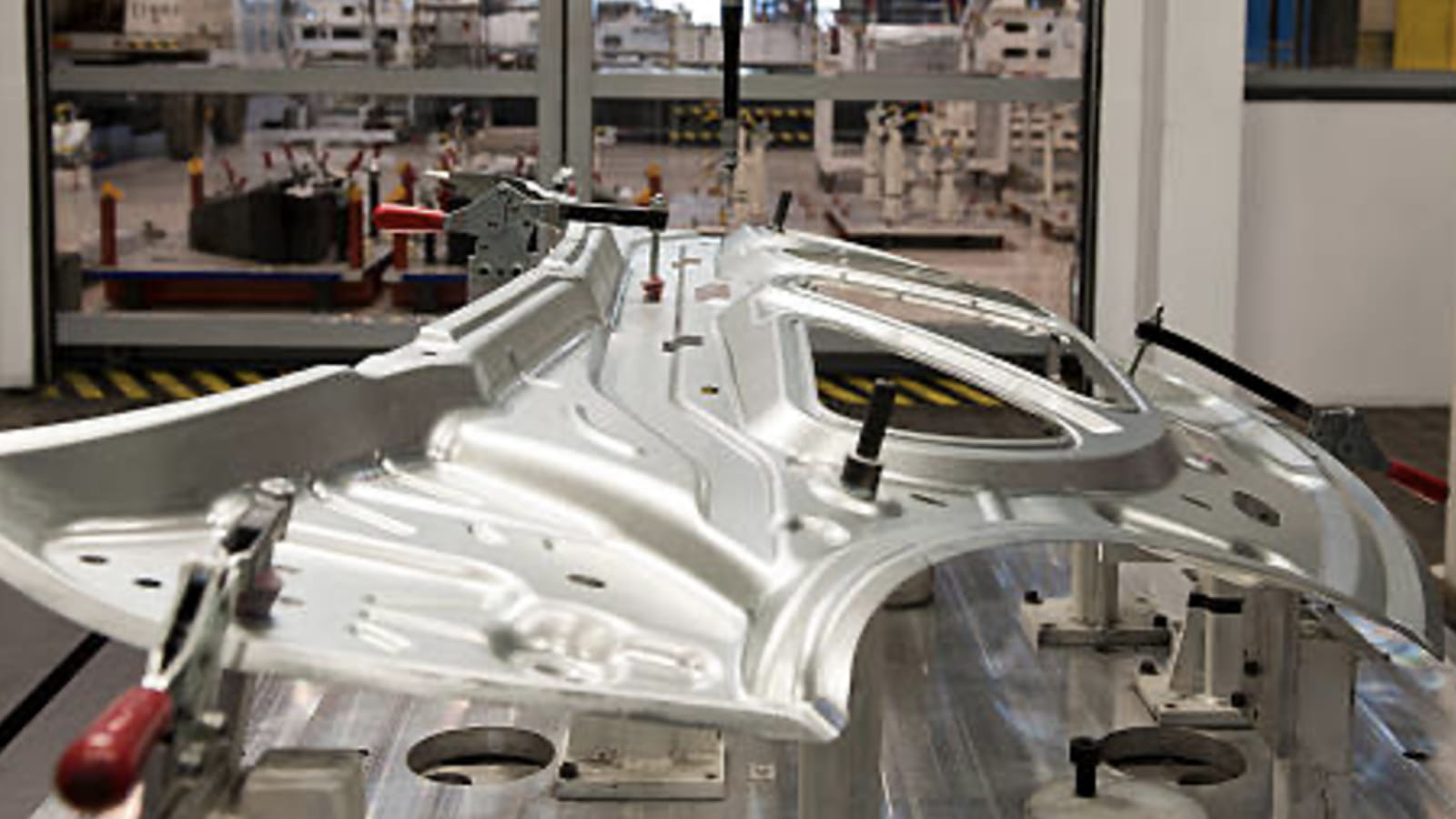
Car Bodies and Frames
The structural integrity of an automobile depends on its body and frame, and a proper manufacturing process should be employed. Many automakers rely on sheet metal fabrication for the automotive industry as the different techniques like welding, bending, and stamping can make car bodies and frames with precise dimensions and tolerances irrespective of design and material.
In modern automotive manufacturing, metal fabrication of light but strong materials, such as high-strength steel and aluminum alloys, allows automakers to create strong car bodies and frames.
Car Customization
Metal fabrication allows automakers to make customized vehicles that suit their personalities. These vary widely due to customer subjection and can include the addition of custom body kits or even unique exhaust systems.
Techniques like welding and riveting can modify automotive parts such as exhaust systems, grille guards, and fender flares. This can also extend to the chassis, as race car manufacturers tinker with the engine to get the perfect race car.
Vintage Car Restoration
Vintage car restoration involves bringing classic or old automobiles to their original state or enhancing their body using modern components without affecting their timeless aesthetics.
Metal fabrication is critical due to the car’s exposure to harsh environmental conditions. It can include the repair or replacement of damaged body panels and frames, crafting interior components, and replicating rare or discontinued parts with modern parts
Building Roll Cages
Roll cages are automotive components used in motorsports and off-road racing that protect the drivers and passengers during collision or rollover. The fabrication often involves creating the cage from bent, notched, and welded high-strength steel tubing. It must also be precise to adhere to specific regulations and guidelines strictly.
Experience Sheet Metal Fabrication with RapidDirect for the Automotive Sector
This article discussed metal fabrication for cars extensively so that businesses can ensure the quality of manufactured automotive parts.
Precision, quality, and efficiency are paramount in sheet metal fabrication for the automotive sector. At these, RapidDirect emerges as a leading partner for automotive sheet metal fabrication.
We leverage innovative technology, diverse and quality material selection, and rapid turnaround times to offer comprehensive solutions tailored to the unique demands of the automotive industry. Looking for a partner for your metal fabrication needs? Choose RapidDirect for a seamless and top-quality experience.
Our online quotation platform provides instant quotations with an automated DfM report after you upload your CAD file and choose your material and quantities. In addition, you can manage your order and track the milling process until delivery!
